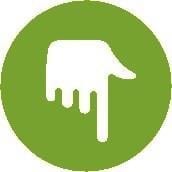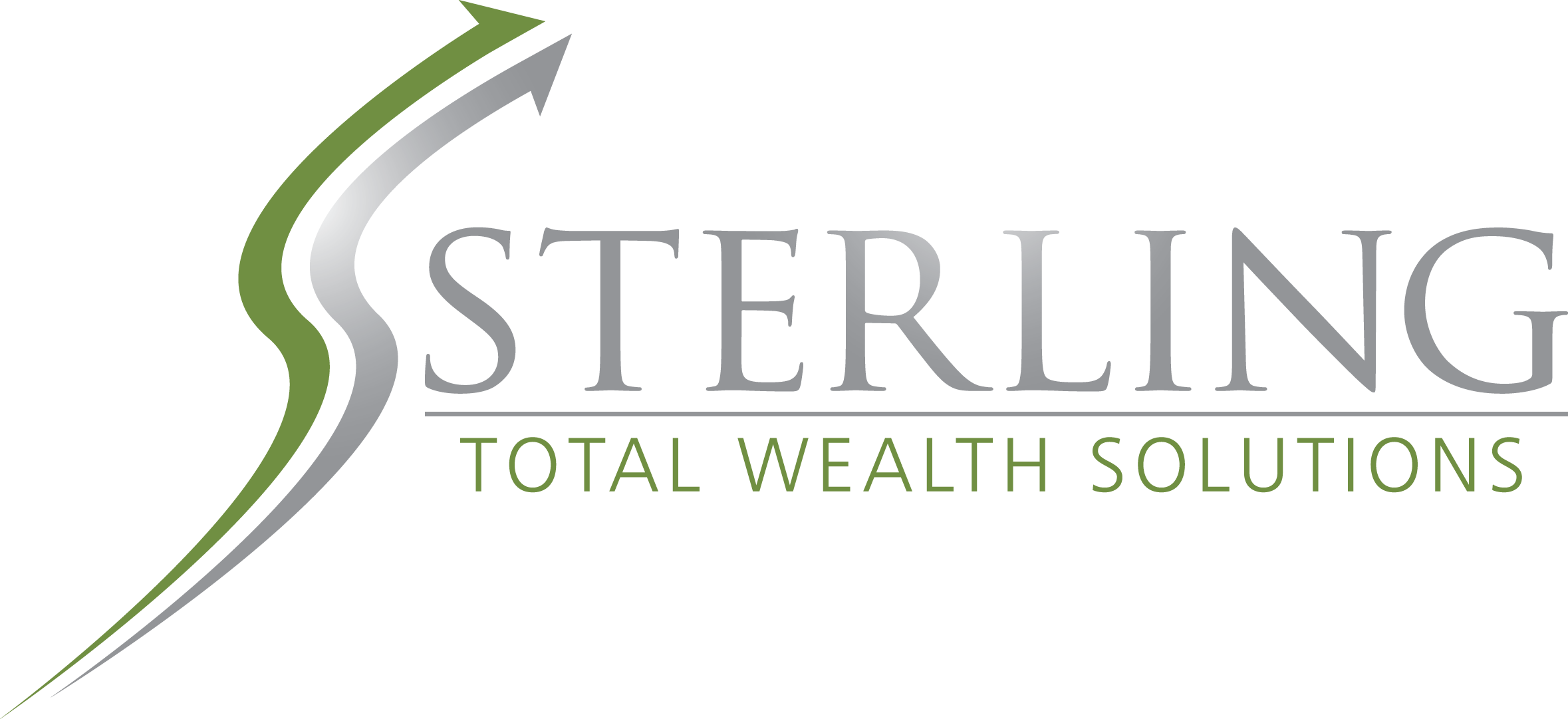In this month’s recap: the S&P 500 returns to record territory, key economic indicators show strength, oil continues its ascent, and existing home sales decline.
Monthly Economic Update
Monthly Economic Update | Presented by Sterling Wealth Advisors | May 2019
THE MONTH IN BRIEF
Wall Street shifted its focus from trade to earnings in April. On that front, the news was good: through April 26, first-quarter results for S&P 500 firms had beaten expectations by 5.3%, a bit better than the historical average of 4.8%. A strong first-quarter gross domestic product reading and solid consumer spending and hiring numbers did much to quell worries about the economy slowing. Existing home sales retreated again; mortgage rates went north again. Oil prices rose. Bullish sentiment was palpable.1
DOMESTIC ECONOMIC HEALTH
Statistically speaking, economists and investors found much to like while looking at the latest round of fundamental indicators.
The first quarter had been a good one: the federal government’s initial estimate of economic growth in that period was 3.2%, far above the 2.2% of Q4 and the 2.3% consensus forecast of analysts surveyed by MarketWatch. In March alone, consumer spending increased 0.9%, and retail sales improved 1.6%.2,3
Unemployment remained at 3.8% in March (and the U-6 jobless rate, which factors in the underemployed, was 7.3% for another month). Nonfarm payrolls grew by a net 196,000 jobs in the third month of the year, which was a nice rebound from the anemic 33,000 gain for February.3
The Institute for Supply Management’s twin purchasing manager indexes, monthly gauges of U.S. service sector and manufacturing sector activity, were well above 50. (When these indices fall below 50, the sectors are judged to be contracting rather than growing.) ISM’s service sector PMI was 56.1 in March; its factory sector PMI, at 55.3.3
The most-watched U.S. consumer confidence index, maintained by the Conference Board, rose 5.0 points in April to a notably high mark of 129.2. The University of Michigan’s monthly index measuring household sentiment also rose, gaining 0.3 points to reach 97.2 for April.2
Yearly inflation picked up from 1.5% to 1.9% in March, but this mostly reflected a jump in gasoline and electricity costs as well as rents. This left annualized inflation near the Federal Reserve’s target rate of 2.0%.3,4
GLOBAL ECONOMIC HEALTH
On April 10, the European Union extended the deadline for the Brexit to October 31, temporarily assuaging fears that the United Kingdom would leave the E.U. without any divorce deal. In announcing this agreement, European Council President Donald Tusk warned U.K. leaders, “Please do not waste this time.” The extension has actually been called a “flextension,” as the U.K. is free to leave the E.U. at any time before Halloween if its Parliament can finally agree to pass a withdrawal deal.5
As April ended, a U.S. delegation landed in Beijing to further trade talks with China, intent to make “substantial” progress toward a truce in the tariff dispute between the two countries. While Secretary of the Treasury Steven Mnuchin told Bloomberg on April 30 that an agreement on trade enforcement methods was “close to done,” there was still much headway to be made on other issues. China’s official manufacturing purchasing managers index was close to the contraction line of 50 in April, coming in at 50.1. Elsewhere in the region, Taiwan’s economy expanded 1.7% in Q1, but officials in Hong Kong announced its economy was slowing; factory output in Japan and South Korea also fell during the year ending in March.6
WORLD MARKETS
Gains were widespread last month, with two benchmarks rising more than 5%: Germany’s DAX rose 7.10%, and Singapore’s STI, 5.83%. Other major advances: France’s CAC 40, 4.41%; Taiwan’s TSE 50, 4.16%; Japan’s Nikkei 225, 4.12%; Spain’s IBEX 35, 3.57%; the FTSEurofirst 300, 3.06%; Mexico’s Bolsa, 3.04%; Canada’s TSX Composite, 2.97%; South Korea’s Kospi, 2.94%; the MSCI EAFE, 2.53%; Australia’s All Ordinaries, 2.50%; Russia’s Micex, 2.49%.7,8
There were only two notable retreats last month. China’s Shanghai Composite lost 0.40%, and Argentina’s Merval dove 13.86%.7
COMMODITIES MARKETS
April saw five major gains among the marquee commodities: unleaded gasoline climbed 8.89%, WTI crude oil rose 5.98%, platinum added 5.34%, heating oil advanced 5.12%, and cocoa improved 4.64%. Where did WTI crude finish the month on the New York Mercantile Exchange? At $63.80 per barrel.9
The U.S. Dollar Index gained 0.23% in April, reaching 97.50 at the April 30 close. April retreats included gold, 0.40%; corn, 0.84%; cotton, 0.85%; silver, 0.96%; copper, 0.99%; coffee, 3.07%; natural gas, 3.59%; soybeans, 4.81%; sugar, 7.18%; wheat, 8.87%. Gold was worth $1,285.40 on the NYMEX’s Commodity Exchange (COMEX) at the April 30 closing bell; silver, $14.90.9,10
REAL ESTATE
First, the bad news. Existing home sales declined again. They were down 4.9% for March, according to the National Association of Realtors, falling right at the start of the spring home buying season. (They were also down 5.4% year-over-year.)11
Mortgage rates crept back up. The average interest rate on the 30-year, fixed-rate home loan, per Freddie Mac’s weekly Primary Mortgage Market Survey, reached 4.20% on April 25; it had been 4.08% back on March 28. Average interest on the 15-year, fixed-rate home loan also rose from 3.57% to 3.64% in that timeframe.12
Now, the good news. New home sales picked up in March, reaching an 18-month peak and increasing 4.5% month-over-month. Developers and builders appeared to be slashing prices, as the Census Bureau said that the median new home price fell 9.7% in March to a 2-year low of $302,700. Additionally, the NAR pending home sales index, a gauge of housing contract activity, rose 3.8% for March after a 1.0% February dip.2,11
[A 30-year, fixed-rate mortgage is a conventional home loan of below $484,350 that meets the lending requirements of Fannie Mae and Freddie Mac, but it is not a mortgage guaranteed or insured by any government agency. Private mortgage insurance, or PMI, is required for any conventional loan with less than a 20% down payment.]
TIP OF THE MONTH

After a significant life event, such as a marriage or the birth of a child, it is smart to review your insurance coverage. You may need more (or less) coverage or even an extra kind of insurance.
LOOKING BACK, LOOKING FORWARD
The three major U.S. stock benchmarks all advanced nicely in April – in fact, the S&P 500 and Nasdaq Composite both closed at record peaks late last month. Nearly 50% of S&P 500 firms had reported Q1 results through the end of April, and those collective earnings results helped all three indices rise 2.5% or more on the month. The S&P ended April at 2,945.83; the Nasdaq, at 8,107.77; the Dow Jones Industrial Average, at 26,592.91. Beyond those benchmarks, the S&P Smallcap 600 added 3.81% to finish the month at 975.06; the CBOE volatility index lost 4.16% in April, settling at 13.12 at the April 30 close.13,14
|
MARKET INDEX |
Y-T-D CHANGE |
1-MO CHANGE |
2018 |
|
DJIA |
+14.00 |
+2.56 |
-5.63 |
|
NASDAQ |
+22.19 |
+4.90 |
-3.88 |
|
S&P 500 |
+17.51 |
+3.93 |
-6.24 |
|
BOND YIELD |
4/30 RATE |
1 MO AGO |
1 YR AGO |
|
10 YR TREASURY |
2.51 |
2.41 |
2.95 |
Sources: barchart.com, wsj.com, treasury.gov – 4/30/1914,15,16
Indices are unmanaged, do not incur fees or expenses, and cannot be invested into directly. These returns do not include dividends. 10-year Treasury real yield = projected return on investment, expressed as a percentage, on the U.S. government’s 10-year bond.
Wall Street is entering May after enjoying some April tailwinds. The earnings parade is expected to wind down this month, and as May plays out, bulls may turn their attention back to trade matters – or to something else entirely. Will stocks lose momentum at that point? It is anyone’s guess. Fundamental economic indicators are, for the most part, still strong. Key housing indicators aside, measurements of hiring, consumer spending, and business activity are holding steady. Remember that your investing approach reflects your goals, time horizon, and risk tolerance.
QUOTE OF THE MONTH

“Everything you can imagine is real.”
PABLO PICASSO
UPCOMING RELEASES
Besides more earnings calls, here is what the news stream offers for the rest of May: April’s Producer Price Index (5/9), the April Consumer Price Index (5/10), a new monthly retail sales report from the Census Bureau (5/15), April housing starts (5/16), the University of Michigan’s initial May consumer sentiment index (5/17), the latest existing home sales figures from the NAR (5/21), April new home sales (5/23), the May Conference Board consumer confidence index (5/28), April pending home sales and the federal government’s second estimate of Q1 economic growth (5/30), and then, the final May University of Michigan consumer sentiment index and the April personal spending report from the Bureau of Economic Analysis (5/31).
THE MONTHLY RIDDLE

Small, soft, and cuddly, I’ll pull on your heart. I share only my last name with a real-live animal who might tear you apart. What am I?
LAST MONTH’S RIDDLE: It is filled with garb, and the price is free; you can take whatever you like, and return what you don’t need. What is it?
ANSWER: A closet.
Securities offered through Registered Representatives of Cambridge Investment Research, Inc., a Broker/Dealer, Member FINRA/SIPC. Advisory services offered through Cambridge Investment Research Advisors, Inc., a Registered Investment Advisor. Sterling Wealth Advisors and Cambridge are not affiliated.
To learn more about Sterling Wealth Advisors, visit us on the web at www.sterlingwealthadvisorstx.com
Know someone who could use information like this?
Please feel free send us their contact information via phone or email. (Don’t worry – we’ll
request their permission before adding them to our mailing list.)
This material was prepared by MarketingPro, Inc., and does not necessarily represent the views of the presenting party, nor their affiliates. The information herein has been derived from sources believed to be accurate. Please note – investing involves risk, and past performance is no guarantee of future results. Investments will fluctuate and when redeemed may be worth more or less than when originally invested. This information should not be construed as investment, tax or legal advice and may not be relied on for the purpose of avoiding any Federal tax penalty. This is neither a solicitation nor recommendation to purchase or sell any investment or insurance product or service, and should not be relied upon as such. All market indices discussed are unmanaged and are not illustrative of any particular investment. Indices do not incur management fees, costs and expenses, and cannot be invested into directly. All economic and performance data is historical and not indicative of future results. The Dow Jones Industrial Average is a price-weighted index of 30 actively traded blue-chip stocks. The NASDAQ Composite Index is a market-weighted index of all over-the-counter common stocks traded on the National Association of Securities Dealers Automated Quotation System. The Standard & Poor’s 500 (S&P 500) is a market-cap weighted index composed of the common stocks of 500 leading companies in leading industries of the U.S. economy. The Russell 2000 Index measures the performance of the small-cap segment of the U.S. equity universe. The CBOE Volatility Index® (VIX®) is a key measure of market expectations of near-term volatility conveyed by S&P 500 stock index option prices. NYSE Group, Inc. (NYSE:NYX) operates two securities exchanges: the New York Stock Exchange (the “NYSE”) and NYSE Arca (formerly known as the Archipelago Exchange, or ArcaEx®, and the Pacific Exchange). NYSE Group is a leading provider of securities listing, trading and market data products and services. The New York Mercantile Exchange, Inc. (NYMEX) is the world’s largest physical commodity futures exchange and the preeminent trading forum for energy and precious metals, with trading conducted through two divisions – the NYMEX Division, home to the energy, platinum, and palladium markets, and the COMEX Division, on which all other metals trade. The SSE Composite Index is an index of all stocks (A shares and B shares) that are traded at the Shanghai Stock Exchange. The IBEX 35 is the benchmark stock market index of the Bolsa de Madrid, Spain’s principal stock exchange. The FTSE 100 Index is a share index of the 100 companies listed on the London Stock Exchange with the highest market capitalization. The DAX 30 is a Blue-Chip stock market index consisting of the 30 major German companies trading on the Frankfurt Stock Exchange. The Bovespa Index is a gross total return index weighted by traded volume & is comprised of the most liquid stocks traded on the Sao Paulo Stock Exchange. The MSCI Emerging Markets Index is a float-adjusted market capitalization index consisting of indices in more than 25 emerging economies. The FTSEurofirst 300 Index comprises the 300 largest companies ranked by market capitalisation in the FTSE Developed Europe Index. The Hang Seng Index is a free float-adjusted market capitalization-weighted stock market index that is the main indicator of the overall market performance in Hong Kong. The CAC-40 Index is a narrow-based, modified capitalization-weighted index of 40 companies listed on the Paris Bourse. The S&P/TSX Composite Index is an index of the stock (equity) prices of the largest companies on the Toronto Stock Exchange (TSX) as measured by market capitalization. The Mexican Stock Exchange, commonly known as Mexican Bolsa, Mexbol, or BMV, is the only stock exchange in Mexico. The Nifty 50 (NTFE 50) is a well-diversified 50-stock index accounting for 13 sectors of the Indian economy. It is used for a variety of purposes such as benchmarking fund portfolios, index-based derivatives and index funds. The BSE SENSEX (Bombay Stock Exchange Sensitive Index), also-called the BSE 30 (BOMBAY STOCK EXCHANGE) or simply the SENSEX, is a free-float market capitalization-weighted stock market index of 30 well-established and financially sound companies listed on the Bombay Stock Exchange (BSE). Nikkei 225 (Ticker: ^N225) is a stock market index for the Tokyo Stock Exchange (TSE). The Nikkei average is the most watched index of Asian stocks. The Korea Composite Stock Price Index or KOSPI is the major stock market index of South Korea, representing all common stocks traded on the Korea Exchange. The FTSE TWSE Taiwan 50 Index consists of the largest 50 companies by full market value and is also the first narrow-based index published in Taiwan. The MICEX 10 Index is an unweighted price index that tracks the ten most liquid Russian stocks listed on MICEX-RTS in Moscow. The MSCI World Index is a free-float weighted equity index that includes developed world markets and does not include emerging markets. The All Ordinaries (XAO) is considered a total market barometer for the Australian stock market and contains the 500 largest ASX-listed companies by way of market capitalization. The US Dollar Index measures the performance of the U.S. dollar against a basket of six currencies. Additional risks are associated with international investing, such as currency fluctuations, political and economic instability and differences in accounting standards. This material represents an assessment of the market environment at a specific point in time and is not intended to be a forecast of future events, or a guarantee of future results. MarketingPro, Inc. is not affiliated with any person or firm that may be providing this information to you. The publisher is not engaged in rendering legal, accounting or other professional services. If assistance is needed, the reader is advised to engage the services of a competent professional.
CITATIONS:
1 – factset.com/hubfs/Resources%20Section/Research%20Desk/Earnings%20Insight/EarningsInsight_042619.pdf [4/26/19]
2 – marketwatch.com/tools/calendars/economic [4/30/19]
3 – investing.com/economic-calendar/ [4/30/19]
4 – apnews.com/73c7e47b547a44d2872fbbe4e0107926 [4/10/19]
5 – euronews.com/2019/04/11/brexit-delay-does-the-extension-to-october-change-anything [4/11/19]
6 – bloomberg.com/news/articles/2019-04-30/china-manufacturing-gauge-unexpectedly-declines-in-april [4/30/19]
7 – markets.on.nytimes.com/research/markets/worldmarkets/worldmarkets.asp [4/30/19]
8 – quotes.wsj.com/index/XX/990300/historical-prices [4/30/19]
9 – money.cnn.com/data/commodities/ [4/30/19]
10 – marketwatch.com/investing/index/dxy/historical [4/30/19]
11 – consumeraffairs.com/news/new-home-sales-surge-in-march-while-existing-home-sales-decline-042419.html [4/24/19]
12 – freddiemac.com/pmms/archive.html [4/30/19]
13 – marketwatch.com/story/stock-index-futures-edge-lower-as-investors-await-earnings-deluge-fed-meeting-2019-04-29 [4/29/19]
14 – barchart.com/stocks/indices?viewName=performance [4/30/19]
15 – markets.wsj.com/us [12/31/18]
16 – treasury.gov/resource-center/data-chart-center/interest-rates/Pages/TextView.aspx?data=yieldAll [4/30/19]
